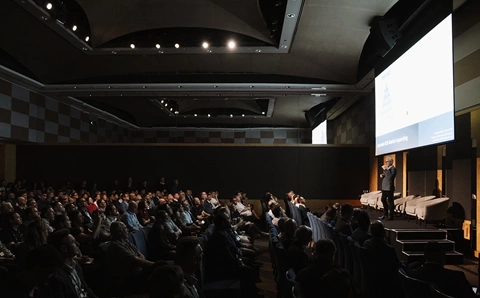Hot on the heels of Telstra's IP telephony announcement, Sun and Fujitsu have partnered to market a competing Broadsoft-based VoIP offering to carriers and ISPs.
Michael Montgomery, manager of voice products at Fujitsu, said the two companies had signed a sales and marketing co-operation agreement to offer VoIP Centrex telephony -- using the same Broadsoft BroadWorks application used in Telstra IP telephony -- to carriers and ISPs across Australia and New Zealand.
Telephony systems in many Australian businesses were nearing the end of their useful life, with five-year-old technologies expected to be gradually replaced in the next two or three years, he said.
'In two or three years' time, people will want to buy a [converged] voice system or want to outsource it,' Montgomery said. 'We'll sell more Sun gear and Fujitsu work to its traditional system integration business in the VoIP world with Broadsoft...that will allow service providers really for the first time to offer virtual PABXs.'
He said an IP Centrex service could be more flexible than IP PBX. The offer rolls Sun hardware, Broadsoft software and Fujitsu IP Centrex telephony into a managed services package, he said.
Montgomery said that previously virtual PABXs had been offered using Nortel and Lucent switches at prohibitive cost.
'To get [such a service] to every customer would cost an enormous amount of money to do that with the older technology,' he said.
The offering would enable service providers to deliver desktop-based telephony in a converged and integrated fashion, Montgomery said.
'But the biggest advantage is, because it's server-based IP technology, the service provider that controls this is able to give the customer a view of their particular voice system via a Web portal. That leads to a lot of soft adds, moves and changes,' he said.
Some 70 percent of adds, moves, and changes in traditional PABX systems were hardware-based, Montgomery said.
'If you put in an $100,000 telephone system with, let's say, 500 users, for the next three to four years as you pay for that, you would probably spend between $20,000 and $30,000 a year on adds, moves and changes. If you reduce that by half that's already significant savings,' Montgomery said.
The companies would also benefit from being able to swap sales leads as a result of their marketing efforts, he said.
Andrew Vlachiotis, Victorian regional manager at Sun Microsystems, confirmed the offering would compete with Telstra's, which also uses Sun hardware and Broadsoft software.
'If you look at the Telstra IP telephony offering, there is pretty similar architecture,' he said.
Vlachiotis said Broadsoft's BroadWorks application was more flexible and scaleable than many competing applications.
VoIP architecture was a 'great model' for service providers hoping to roll out new applications for their customers over time, he added.
'You can move them on and move them off, for specific communications or voicemail. In the past, a lot of managed services were too complex for traditional TDM architecture,' Vlachiotis said.
He said IP telephony appeared to be approaching the end of a hype cycle, as potential customers learnt what the technology was really capable of as network services provision accelerated.
'We will be looking more at self-provisioning, that is customers having access to turn features on or off [themselves],' Vlachiotis said. He said businesses would tend to focus more on desktop IP over time, using hardware such as Sun's SunRay work station to run a client over IP that incorporated voice, data and video.
'The next thing will be how to do the whole mobility model,' Vlachiotis said.




.jpg&h=142&w=230&c=1&s=1)

_(21).jpg&h=142&w=230&c=1&s=1)




.jpg&w=100&c=1&s=0)
_(8).jpg&w=100&c=1&s=0)









